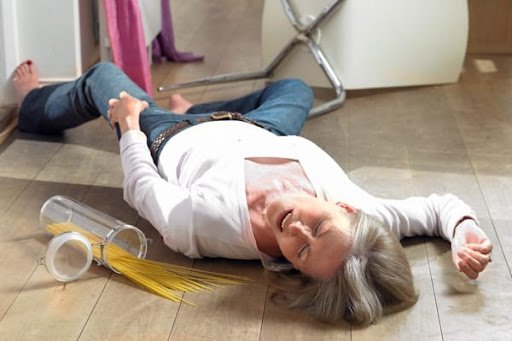Diagnosis and management of status epilepticus
Post of MSc. Dr. Phan Van Phong - Emergency Doctor - Emergency Resuscitation Department - Vinmec Central Park International General Hospital
A state in which seizures occur in succession, in which neurologic symptoms and/or disturbances of consciousness persist in the inter-episode period; or a seizure that persists for too long causes a severe clinical picture.
Regarding the duration of a seizure activity from 30 minutes or more with different symptoms due to diverse anatomical, pathophysiological and etiological processes.
Some authors give a more clinically relevant definition: + Convulsions lasting more than 5 minutes, or + Having more than or equal to 2 seizures without complete recovery of consciousness between seizures.
1. Cause 1.1. Acute CNS injury: Encephalitis or meningitis. + Bacterial: meningococcal, streptococcal, influenza, staphylococcus,... + Viruses: herpes virus, adenovirus,... + Fungal: Cryptococcus, aspergillus,.. + Due to tuberculosis bacteria. + Due to parasites: larvae of strongyloides, brain flukes,... Cerebral venous thrombosis: due to bacterial infection, coagulation disorders,... Cerebrovascular disease: + Cerebral infarction. Brain hemorrhage. Subarachnoid hemorrhage. Brain damage due to trauma. Encephalopathy due to hypertension. Brain damage due to hypoxia and anemia: + After circulatory arrest. + Stop breathing. 1.2. Chronic CNS damage History of cerebrovascular accident. Brain tumors . 1.3. Metabolic disorders or poisoning Drug overdose: amphetamine,... Withdrawal syndrome (benzodiazepine, alcohol) Due to treatment drugs: betalactam, theophylline, Increase or lower blood sugar. Electrolyte disturbances: hyponatremia or hypocalcemia High fever in children. 1.4. Seizures Abruptly stopping or changing the dose of antiepileptic drugs. Psychiatric seizures.
2. Seizure symptoms 2.1. Clinical symptoms 2.1.1. Generalized status epilepticus convulsive-hypertonic (tonic-clonique) Generalized epileptic seizures that follow one another, without recovery of consciousness between seizures. Sometimes the seizure manifests itself clinically only with mild convulsions of the face. May present only with coma. 2.1.2. Persistent or continuous absence seizures Often present with confusion. There may be subtle twitching of the eyelids. Risk of permanent intellectual sequelae if the attack is prolonged. 2.1.3. Partial status epilepticus Multiform. Convulsive seizures with motor deficits between seizures: + Persistent speech disturbance. + Confusion. Risk of irreversible brain damage. 2.2. Paraclinical symptoms EEG: confirm the diagnosis of status epilepticus and classify lesions on the central nervous system. Other imaging and laboratory tests: assessment of causes and complications of status epilepticus

Chẩn đoán động kinh có vai trò rất quan trọng
3. Seizure diagnosis 3.1. Clinical diagnosis: convulsion lasting more than 30 minutes or seizures lasting more than 5 minutes without neurological recovery between attacks Subclinical: EEG identifies persistent seizure waves.
3.2. Diagnosis of the cause Cerebrospinal fluid puncture: Detects meningitis caused by bacteria, viruses, fungi, tuberculosis, and parasites. Cranial magnetic resonance imaging: determining venous thrombosis, brain damage due to lack of oxygen, hypoglycemia. CT scan of the brain: determining cerebral infarction lesions, cerebral hemorrhage, subarachnoid hemorrhage, traumatic brain injuries, brain tumor lesions. EEG: Very valuable in diagnosing status epilepticus with unclear clinical manifestations. Diagnostic tests
Look for amphetamines, alcohol, sleeping pills,...blood and/or urine tests. Blood electrolyte disorders: hyponatremia, hypocalcemia.
4. Seizure management 4.1. Principles of management Ensure basic vital functions: respiration, hemodynamics, metabolic acidosis, body temperature, first aid for injuries. Stop seizures with every available medication, as quickly as possible. 4.2. Anticonvulsants Benzodiazepines: first-line anticonvulsants because of their rapid cessation of seizures. Phenytoin (or fosphenytoin) (Dyhydan, Dilantin) + Efficacy (60-80%) especially with partial seizures and prevention of recurrence of long-term seizures. + Maximum dose: phenytoin up to 50mg/min, fosfenyltoin up to 150mg/min. + Side effects: circulatory depression and need to slow injection. + Contraindications: decompensated heart disease, conduction disturbances. Should not be used in the elderly, coronary heart disease. Barbiturates: Acts through the GABA receptor. The two most commonly used drugs in this group are Phenobarbital & Pentobarbital. + Phenobarbital: Very effective, intravenous administration works after 5 minutes and lasts long. Risks: nervous depression (increased when combined with benzodiazepam + Thiopental:
Fast acting, effective; widely used in HSCC departments. Dosage: 3-5mg/kg start, then 50mg/min, maintain 1-5mg/kg/hour Propofol: + Usually used to treat refractory status epilepticus + Fast action, duration of action. Can cause hypotension or respiratory depression, rare but dangerous syndrome including metabolic acidosis, rhabdomyolysis, renal failure and cardiac dysfunction Some other drugs: + Valproate ( depakine): little experience in intravenous use + MgSO4: mainly used in eclampsia, dose 2-4g/5 minutes intravenously then 1g/hour for 24 hours + Lidocaine intravenous: little use (effective) transient, many side effects) + Muscle relaxants: not antiepileptic drugs mainly used to control the consequences of seizures 4.3 General resuscitative measures Ensure breathing:
Intubation trachea (protection of airways, suction of phlegm). y volume control regimen if comatose. Monitor SpO2 (> 95%) and arterial blood gases. Ensure hemodynamics: Monitor heart rate and blood pressure. Central venous catheters should be placed: ensure fluid administration, infusion of drugs + measure central venous pressure. If hypotension: volume replacement, vasopressors, ensure ventilation, correct severe metabolic acidosis. Metabolic acidosis: Monitor arterial blood gases. Most metabolic acidosis will self-correct once seizures have been controlled. NaHCO3 in very severe acidosis pH < 7.15. May be combined with respiratory acidosis, pay attention to adjust the ventilation flow/min. Hyperthermia: Commonly caused by the seizure itself, with a greater risk of CNS damage. Need to quickly lower body temperature < 39oC: cold compress, ventilate, paracetamol 0.5g/ every 4 hours. Cerebral edema: Lie with the head 45 degrees. Mannitol by rapid intravenous infusion over 30 minutes 0.5-1 g/kg body weight every 4-6 hours Methylprednisolone 40mg IV every 6-8 hours. Or Dexamethasone in meningitis. Control seizures. Prevention and treatment of rhabdomyolysis: Give fluids and increase urination (100 ml/hour) and intravenous diuretics if necessary. Pay attention to first aid for accompanying injuries: traumatic brain injury, maxillofacial trauma, fracture...

Có thể dùng thuốc cắt cơn co giật khi xử lý động kinh
5. Prognosis and complications 5.1. Prognosis Mortality rates in patients with first onset status epilepticus are approximately 20%, which varies with the underlying cause. The cause of death is mainly related to disorders caused by prolonged muscle twitching such as: rhabdomyolysis, lactic acidosis, aspiration pneumonia, respiratory failure... Risk of seizure recurrence is found in 1/ 3 patients followed a 10-year longitudinal follow-up study, and 10% of patients had neurological sequelae. 5.2. Complications When a convulsion lasts for more than 30-45 minutes, it can cause brain damage (especially limbic structures such as hippocampus): brain, neurological sequelae, permanent intelligence. In addition, status epilepticus can cause many other consequences: + Trauma: traumatic brain injury, shoulder dislocation, fracture, contusion of organs. + Respiratory disorders: stagnation, aspiration pneumonia, respiratory acidosis. + Hemodynamic disorders. + Metabolic acidosis. + Disorders of body temperature, dehydration, rhabdomyolysis. 5.3. Prevention Use the right dose of medicine and do not stop suddenly. Avoid favorable conditions that cause convulsions, arrange work and occupation properly to prevent secondary accidents occurring when convulsions.
Để đặt lịch khám tại viện, Quý khách vui lòng bấm số HOTLINE hoặc đặt lịch trực tiếp TẠI ĐÂY. Tải và đặt lịch khám tự động trên ứng dụng MyVinmec để quản lý, theo dõi lịch và đặt hẹn mọi lúc mọi nơi ngay trên ứng dụng.
References: 1. Stecker M.M. (2013), Status epilepticus in adults. Update 21.2 2. Dhar R. (2008), Status epilepticus, The Washington manual of critical care, the 2nd edition. 3. Shonrvon S. (2000), Handbooook of epilepsy treatment, Blackwell science. 4. Karine J., Khaled A., Hirsch L.J. (2010), Updates in the Management of Seizures and Status Epilepticus in Critically Ill Patients., Comprehensive Epilepsy Center, Columbia University, 7th floor, 710 West 168th Street, New York, NY 10032, USA. 5. Jean-Louis Vincent. et al (2010), Textbook of Critical care, the sixth edition.






